#Birch Bark Canoe
Explore tagged Tumblr posts
Photo
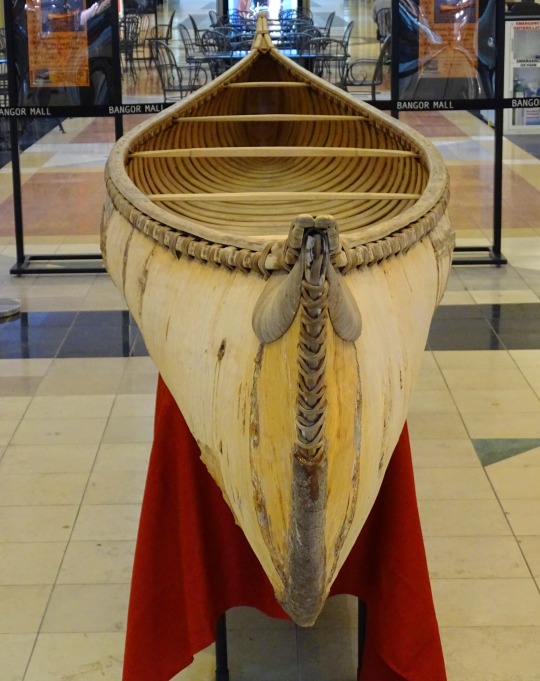
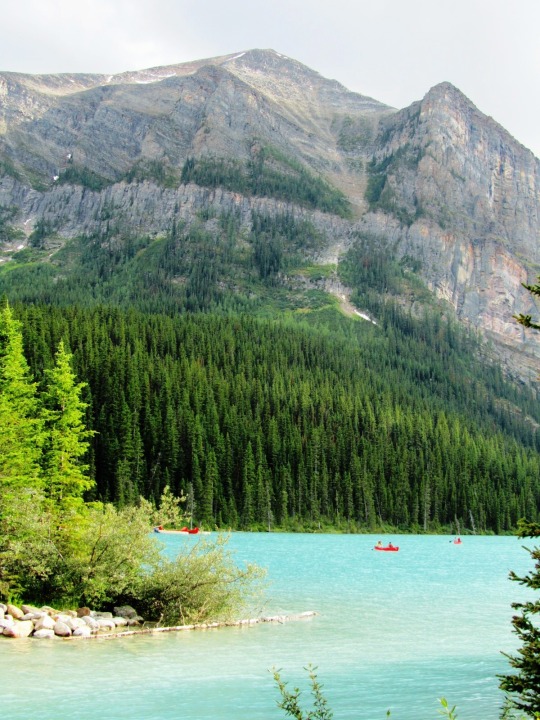
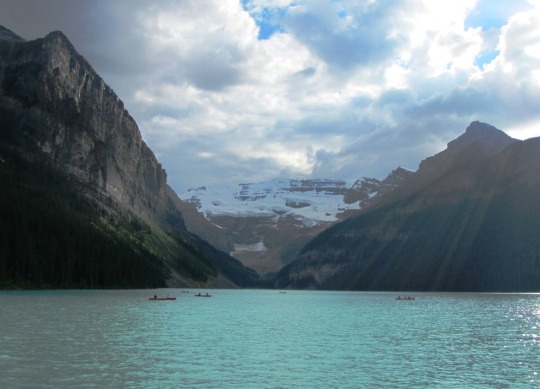
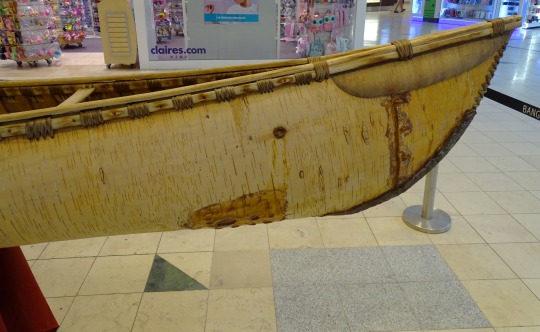


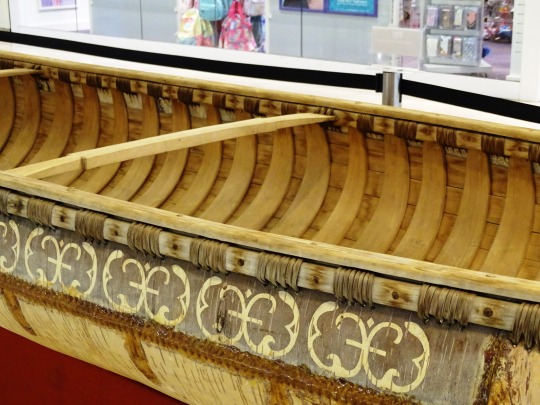
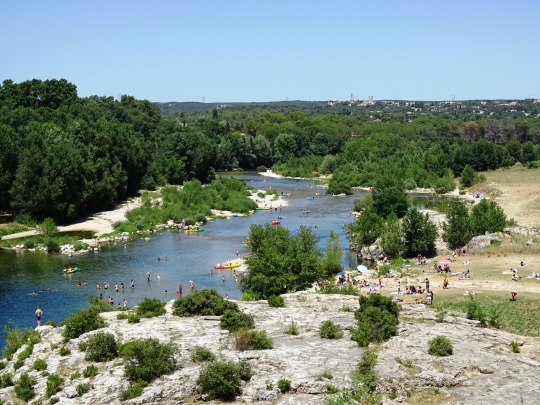
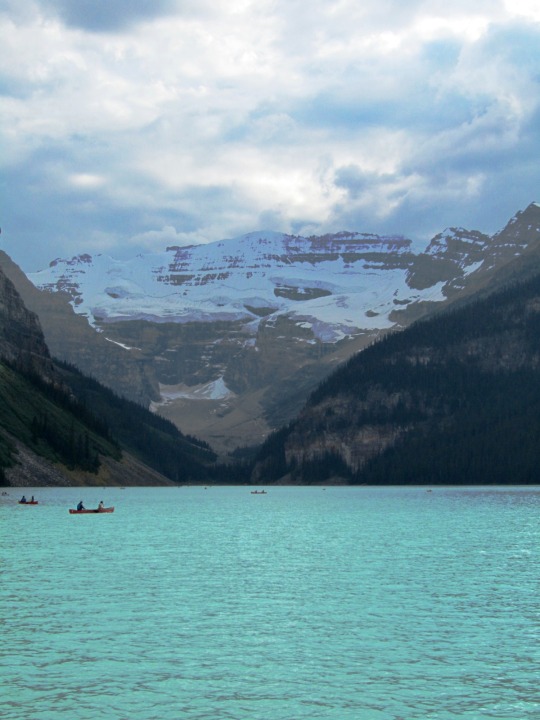
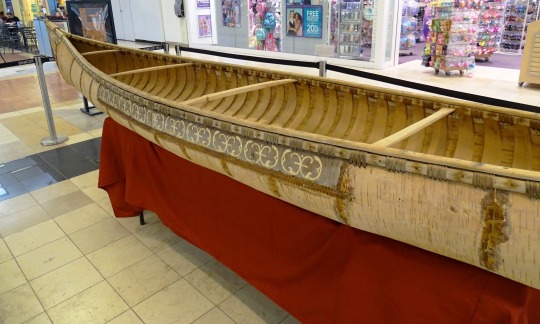
National Canoe Day
National Canoe Day is celebrated on June 26 every year. Though it is a Canadian holiday, it’s celebrated in the U.S. as well. Canoeing is both a sport and a recreational activity — one that’s relaxing and good for the environment. Wherever there is water, there are canoeists. On National Canoe Day thousands visit their favorite waterways, exploring their lakes and rivers or participating in competitive aquatic events. Canoeing is a fun activity that’s easy to learn and friendly to people across different age groups. It’s also a low-impact form of exercise, so it’s good for your health too.
History of Canoe Day
Canoes have been around for millennia and used by different cultures and civilizations throughout the ages. The oldest canoe in existence dates back to 8000 B.C. It was carved out by hand with basic flintstone tools from the hollowed-out trunk of a pine tree. Canoes predate the arrival of Europeans on the American continent. They were widely used as a method of transport, catching food, trading items, and even in warfare.
Native Americans used canoes made of birch-bark trees, tying together strips of wood with strong roots, then sealing them up with a pitch to prevent leakage. In 3500 B.C. the design of South American canoes was simpler but still effective. They made their boats from hollowed-out logs, which they expanded with heat and sharpened on both ends. This made them cut through the water faster. Around 1500 B.C. Polynesians had very elaborate, colorful canoes equipped with sails and crossbeams. They were much larger and sturdier than conventional canoes as their purpose was ocean voyages.
By the 19th century, the techniques and technology for building canoes had evolved thanks to centuries of interaction with Europeans. Canoeing became a popular activity in the Western world as a result of this. In a world when ships and railroads existed, there was no need for canoes to be utilized for maritime transportation. Instead, Europeans used them for recreational and sporting purposes. John MacGregor, an English explorer who popularized canoeing in the United States and Europe, created the Royal Canoe Club of London in 1866. This was followed by the “American Canoe Association” formed in 1880. In 1946, the International Canoe Federation was founded, acting as the umbrella body for national canoe organizations worldwide.
Canoe Day timeline
1924 Canoeing Joins the Olympics
Canoeing debuts as an Olympic demonstration sport at the Paris Olympics.
1944 The Introduction of Aluminum Canoes
William Hoffman, Vice President of Grumman Aircraft Engineering Corporation, comes up with an idea for a lightweight canoe made of aluminum.
1955 The Discovery of the Oldest Canoe
The ‘Pesse’ canoe — considered the world’s oldest known boat — is discovered in the village of Pesse in the Netherlands.
1987 The Discovery of the Second-Oldest Canoe
The ‘Dufuna’ canoe — the second oldest canoe — is discovered by a cattle herdsman in Nigeria while he is digging a well.
Canoe Day FAQs
What is a canoe person?
A canoe person or canoeist is someone who paddles a canoe.
How many miles can you canoe in a day?
You can canoe for roughly 20 miles in one day, factoring in things like speed and mileage. This adds up to about seven hours of non-stop paddling for an entire day, with breaks in-between.
How difficult is it to canoe?
Canoeing is not a difficult task. Most people learn how to paddle solo canoes in an hour or two.
Canoe Day Activities
Go for canoe lessons
Attend a canoe race
Buy a canoe
Learning how to row a canoe is a great way to celebrate National Canoe Day. It’s not a difficult skill to pick up at all, it just takes a bit of practice and dedication. You can learn with a solo canoe, a two-person canoe for someone special, or a four-person canoe for larger groups.
Whitewater canoeing is an exciting sport. As you watch the races you’ll quickly realize that it takes great skill to navigate rapids without flipping over or crashing. As a spectator, you get to experience the thrill with none of the risks.
Buying a canoe can prove quite convenient if you live near rivers or lakes. This way you can celebrate National Canoe Day each year by taking your craft out for a spin on the water. Besides, canoeing is a peaceful, relaxing activity that keeps you in shape.
5 Interesting Facts About Canoeing
The longest canoe trip
Florida has the eldest canoes
Hungarians are canoeing champions
Canoes are different from kayaks
Canoes were used during WW2
In 1980, Don Starkell and his teenage sons paddled from Winnipeg, Canada to the Amazon River, covering more than 12,000 miles over two years.
Florida has more than 400 old, dug-out canoes preserved in their original state — the highest number in the world.
Hungary has won 41 medals in canoeing since 1980, with 18 of them being gold medals.
Canoes have open decks with rowers sitting or kneeling inside the canoe, while kayaks have closed decks with a hole cut in the center where the rower sits.
During Operation Frankton, canoes were used to transport commandos to raid ships in the French port of Bordeaux, which was under German occupation at the time.
Why We Love Canoe Day
It highlights an obscure sport
It teaches us to appreciate the environment
It keeps canoeing relevant
Canoeing is one of the lesser-known watersports. It doesn’t get much mainstream coverage compared to other events like swimming, sailing, or diving. National Canoe Day brings awareness to this activity and its competitive watersports variants.
Whether you’re doing it recreationally or competing in an event, canoeing takes place outdoors. On National Canoe Day, we get in touch with mother nature and deepen our appreciation for the environment.
National Canoe Day doesn’t just celebrate one of the oldest forms of transport and recreation. It also keeps the conversation on this activity going. Every year on June 26, more people get to know about canoeing and its history.
Source
#Wabanki Canoe#Birch Bark Canoe#native american#Bangor#Maine#USA#summer 2018#original photography#travel#vacation#history#Gardon River#France#2021#2012#Lake Louise#Banff National Park#landscape#countryside#tourist attraction#landmark#indoors#outdoors#National Canoe Day#NationalCanoeDay#26 June#Alberta
6 notes
·
View notes
Text
A Blue Canoe and Turtle
Native American symbolism in a canoe and a turtle on a rich blue background. An ideal format for beach homes, lake house or any space that loves the great outdoors! GET THE CANOE HERE! GET THE TURTLE HERE!

View On WordPress
#aqua and blue#art#beach#birch bark canoe#birchbark canoe#blue art#canoe#canoeing#canoes#Colorful Art#native american art#native american decor#native american symbols#prints#sharon cummings#sharon cummings art#turtle#turtle art#turtle paintings
0 notes
Text

A common joke that comes with freshwater lakes is that they are superior to the saltwater because they are "shark-free." While indeed many ponds and rivers can rest easy knowing they don't have razor-toothed flesh eating fish within them, that comfort cannot be given to all freshwater bodies. One must remember that every ecosystem has its predators, with issues only arising when they get too big or aggressive. Yes, the lakes don't have sharks, but they have other fish that some would consider even worse...
The native Americans knew quite well where log gars could be found. It was in waters where their canoes were chewed into splinters. This is because log gars possess a nasty set of serrated teeth and an incredible aggression towards wooden objects. Log gars are carnivorous fish, using their long toothy jaws to shred prey. While they will happily eat whatever they come across, it should be noted that their primary prey are beavers. This is where their saw-like teeth come into play, as these weapons help rip through beaver dens and dams so that they can get at the morsels behind the wooden walls. A lifestyle of devouring beavers has led to the species developing a link between food and wood, where chewing through wooden objects inevitably leads to meat. While this does lead to them attacking fallen branches, their beliefs were validated when man and his wooden boats came to their waters.
The natives of these regions learned this lesson, and so would others who came. Canoes of wood and birch bark were seen as targets, and the log gar's teeth sawed through them with ease. Torn open by these eager fish, the boats would sink and leave the floating men inside at the mercy of these gar. To no surprise, quite a few folk were devoured by the log gar. Even loggers who floated their products down the river fell to these nasty fish, who detected the presence of meat atop it all. Many attempts were made to be rid of these terrors, but the log gar is no easy foe. Their bodies are covered with hard scales coated in dentine, which can repel spear and hook. Attempts to stab them often fail, and their razor teeth mean hook and line is easily severed. Nets are torn to ribbons and any more extreme efforts would jeopardize the rest of the aquatic life within. Even if someone were to master a way to catch them, their populations are high enough that it would be impossible to deplete them by hand.
Even as nasty as they are, natives did occasionally succeed in catching these fish or finding dead ones. Those that they could harvest would have their scales used as arrowheads and shielding, while their jaws made fine makeshift saws. Log gar meat is seen as disgusting, due to its composition and their propensity to swallow a whole lot of sawdust during their feeding frenzies. Their hard scales also make them a pain to fillet, though they may help make your knife sharper!
Log gars proved to be a menace in many lakes, causing quite a few to be marked off limits for water sports and other recreational activities. When man started to switch from wood to fiberglass, the attacks on these vessels lessened. The few log gar that made the mistake of attacking these ships often perished after swallowing chunks of fiberglass, leading to a painful demise. While this does make water travel safer against these fish, it still isn't recommended in some areas due to the possibility of someone falling in. Even if your boat doesn't sink, an accidental tumble into the water can end in a bloody demise.
Though hated and feared by many, often considered pests and menaces, the log gar does get its rare times to shine. Their scales make for neat jewelry, and one renowned power tool company has one as their mascot. They are also highly valued as fishing trophies, due to the extreme difficulty to catch one and the fact that many older larger specimens remain around today. And who could forget the charming children's safety scissors made to look just like them?
---------------------------------
"Log Gar"
121 notes
·
View notes
Text
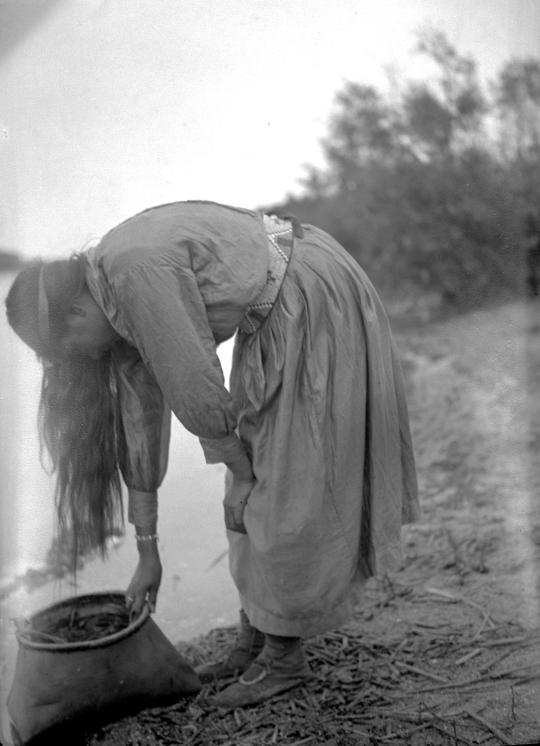
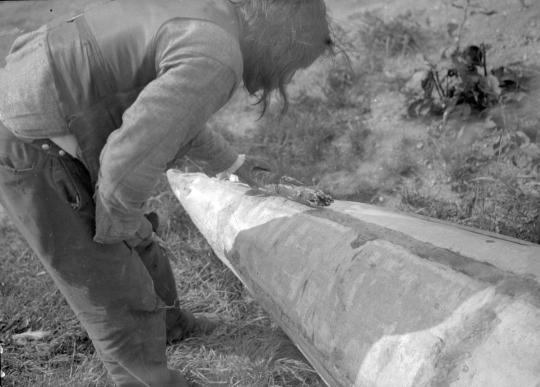
Paul Coze. Young Cree Woman With Birch Bark Container - Waterhen River, Northern Saskatchewan, circa 1928- 1934.
Paul Coze. Repairing a Crack in a Birch Bark Canoe with Hot Resin - Waterhen River Cree - Northern Saskatchewan, circa 1928 - 1934.
76 notes
·
View notes
Text


Tekeni Teiohate, The Two Row Wampum
“You say that you are our Father and I am your son. We say, We will not be like Father and Son, but like Brothers. This wampum belt confirms our words. These two rows will symbolize two paths or two vessels, traveling down the same river together. One, a birch bark canoe, will be for the onkwehón:we, their laws, their customs and their ways. The other, a ship, will be for the white people and their laws, their customs and their ways. We shall each travel the river together, side by side, but in our boat. Neither of us will make compulsory laws or interfere in the internal affairs of the other. Neither of us will try to steer the other’s vessel.” “As long as the Sun shines upon this Earth, that is how long OUR Agreement will stand; Second, as long as the Water still flows; and Third, as long as the Grass Grows Green at a certain time of the year. Now we have Symbolized this Agreement and it shall be binding forever as long as Mother Earth is still in motion.” Rotinonshón:ni-Dutch treaty, 1613
#precolonial#precolonial history#first nations#indigenous#Iroquois#mohawk#history#anthropology#true history#Rotinonshón:ni Polity#Rotinonshón:ni#Rotinonshon:ni Polity#us politics#us history#Native Americans#Northeastern Anarchist#Six Nations#anarchism#anarchy#anarchist society#practical anarchy#practical anarchism#resistance#autonomy#revolution#communism#anti capitalist#anti capitalism#late stage capitalism#daily posts
9 notes
·
View notes
Text
Remember Your Asemaa
There was once a boy. He lived by a creek with his grandmother. In the early evenings, he would go out before the sun set to look for things.
His grandmother had a gift. She was a maker, and she always transformed anything he brought home to her into something magical.
His grandmother taught him from very young the importance of laying your asemaa down as an offering, to say miigwetch for what you are taking from the land.
One time, the boy went out looking, offered his tobacco, and brought home a big partridge miigwan. He gave the feather to ookomisan, and she made a beautiful dreamcatcher to hang above his bed by the window.
Another time, he found a nice birch tree. He put down some asemaa and began peeling the bark. When he got home, his grandmother spent the whole weekend weaving a strong basket so they could pick more miinan.
This time, though, the boy went out and found a short, smooth piece of driftwood. As he was examining it, something else down by the water caught his eye. A small, rounded rock with a hole in the center. The boy, now excited, took the piece of wood and the rock back with him in a hurry as the sun was beginning to set.
The next morning, his grandmother admired the piece of wood he brought back before deciding what it would become. She began working and the boy sat in the corner playing with the small rock he found. He looked up, and saw a transformation take place before his very eyes. His grandmother tossed the whittled bits from her lap into the fireplace and came over to the boy with mitigo-jiimaan. He took it from her and they headed outside to the creek to test it out.

He placed it down onto the water. It worked! It could float! The boy jumped up and hugged his grandmother to thank her. The boy stayed outside awhile to play with his little wooden canoe.
The next morning, the boy's grandmother was upset. She explained that when she woke up she found the small canoe she had worked so hard making had been broken in half.
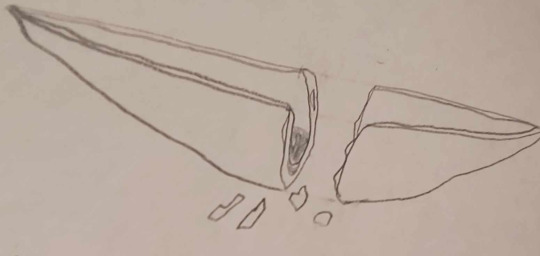
The boy begged his grandmother to believe that he would never break it. She thought for a moment, and asked him to calmly explain what happened the day before. When he was done, his grandmother instantly knew what had gone wrong. He had forgotten to offer tobacco. She sent the boy out with some asemaa in one half of the broken canoe, and some maple taffy in the other to offer up to memegwesiwag. She told him that the little people would accept his apology if he made sure to always offer his tobacco.
Early the next morning, the boy went to grab his special rock to take with him to go see what had happened to his canoe down by the creek. It was gone! The boy raced down to the water, hoping for some good news. His canoe wasn't there anymore, either!
The boy ran back home to his grandmother and started crying. She hugged him and told him to calm down, and that she would make him some cedar tea. The boy went to his corner by the fireplace, and couldn't believe his eyes. There was his now-fixed mitigo-jiimaan, complete with tiny, ornate carvings along where the crack had been. Inside the canoe, he found his rock turned into a necklace. His grandmother told him that he should wear it every day, to remind him to always remember his asemaa.
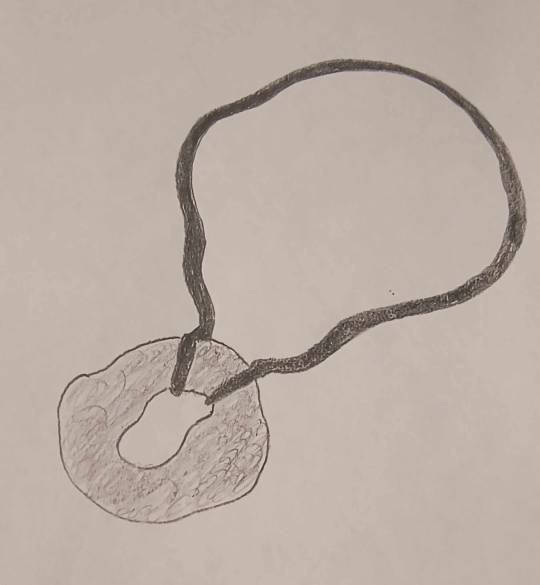
Chi-miigwech for reading and sharing my story.
asemaa: tobacco
miigwetch: thank you
miigwan: feather
ookomisan: [his] grandmother
miinan: blueberries
memegwesiwag: little people (dwarf spirits)
mitigo-jiimaan: wooden canoe
#writblr#indigenous#indigenous heritage#native#indigenous stories#short stories#métis#anishinaabe#anishinaabemowin#ndn#indigenous writers
28 notes
·
View notes
Text
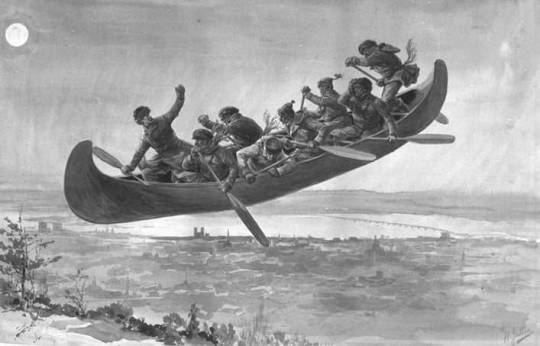
Henri Julien ''Birch bark Canoe that Flies'' pen & ink Christmas in Quebec...'Bewitched Canoe'.. appears to be over St. Louis Bay, Duluth
8 notes
·
View notes
Text
The Mysterious Peterborough Petroglyphs

The Peterborough Petroglyphs are the largest collection of ancient rock carvings in all of North America, made up of over 900 images carved into crystalline limestone located near Peterborough in Ontario, Canada.
Designated a National Historic Site of Canada in 1976, local indigenous people believe that this is an entrance into the spirit world and that the Spirits actually speak to them from this location. They call it Kinoomaagewaapkong, which translates to "the rocks that teach."
The petroglyphs are carved into a single slab of crystalline limestone which is 55 metres long and 30 metres wide. About 300 of the images are decipherable shapes, including animals, humans, shamans, solar symbols, geometric shapes and boats.
It is generally believed that the indigenous Algonkian people carved the petroglyphs between 900 and 1400 AD. But rock art is usually impossible to date accurately for lack of any carbon material and dating artfiacts or relics found in proximity to the site only reveals information about the last people to be there. They could be thousands of years older than experts allow, if only because the extensive weathering of some of the glyphs implies more than 1,000 years of exposure.
There are some other mysteries surrounding these remarkable petroglyphs. The boat carvings bear little resemblance to the traditional boat of the Native Americans. One solar boat -- a stylized shaman vessel with a long mast surmounted by the sun -- is typical of petroglyphs found in northern Russia and Scandanavia. A Harvard professor believes the petroglyphs are inscriptions (and maybe even a form of written language) left by a Norse king named Woden-lithi, who was believed to have sailed from Norway down the St. Lawrence River in about 1700 B.C., long before the Greenland Viking explorations.
Another vessel depicted in the petroglyphs is a large ship with banks of oars and figure-heads at bow and stern. There is a large steering oar at the stern, a necessary feature only for vessels that are 100 feet or more in length. However, the Algonkian people who inhabited the region never built anything more seaworthy than a birch-bark canoe or a dugout. Even reluctant archaeologists admit that the ships "do not look like real Algonkian canoes" but steer away from any controversial conclusions about pre-Columbian visitors by speculating that the vessels are simply a shaman's idea of magical canoes that travel the universe.
Another peculiarity is the figure-heads at bow and stern which resemble birds. The same design can be seen in Etruscan repousse gold work of the 9th century BC. The bird-headed ships were portrayed 200 years earlier, when Egyptian artists carved their images into the walls of Pharaoh Ramses IIIs "Victory Temple" in the Valley of the Kings.
Yet another mystery is the presence in the petroglyphs of a tall figure or 'god' which stands with arms akimbo and with a halo radiating rays, presumably from the sun. Cowering before him are two minute humble humans in attitudes of supplication. Scientists think the figure may represent a sun god but there doesn't exist any known cases of sun worship among the indigenous people of the region.
Some historians and researchers believe there is more to the petroglyphs than meets the eye. Some maintain that they are in fact a sky map of the heavens based on European tradition from 3100 BC. Evidence includes four signs which are the same as those found for the identical astronomical position at Lewes, England, leading to a possible speculative connection between the Peterborough petroglyphs and the megalithic people of Ancient Britain.
So the petroglyphs of Peterborough remain an intriguing riddle, a sort of code to which the key is still missing.
17 notes
·
View notes
Text
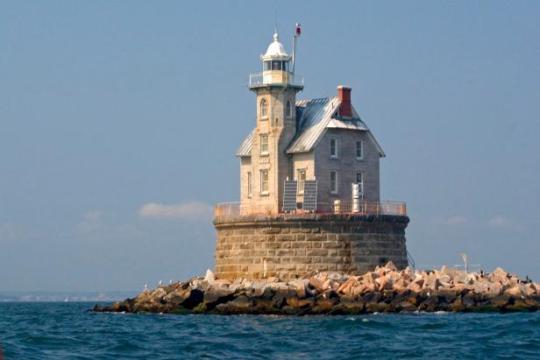
RACE ROCK LIGHTHOUSE
SOUTHOLD, NY
It seems that ghosts like to hang out in lighthouses. The violent deaths from these disasters could leave behind a spiritual residue or life force that lingers where it happened.
According to Native American lore, Race Rock Reef was once an island. Because of the swift currents running up to six knots in the Race and the sharp rocks that could tear out the bottom of their birch bark canoes the Indians avoided it. They believed the place was haunted and as sea levels have risen the island has disappeared beneath the waves.
Many members of the Coast Guard have claimed to hear disembodied whispers, laughing, voices and even yelling. Some have been touched, poked, or pushed by these phantoms and refuse to return to this property. Unexplainable footsteps and the sounds of running water have also been experienced. Many passing boats claimed they have witnessed a shadowy presence of a man in the tower as the light passed over them.
#RACE ROCK LIGHTHOUSE#haunted lighthouse#ghost and hauntings#paranormal#ghost and spirits#haunted locations#haunted salem#salem massachusetts
13 notes
·
View notes
Photo

Blütenpollen der Thuja Occidentalis >
die Indigenen Anishinaabe (Ojibwe) aus Kanada nennen die Thuja: “Nookomis Giizhik” - Großmutter Zeder * the indigenous Anishinaabe (Ojibwe) from Canada call the thuja: "Nookomis Giizhik" - Grandmother Cedar >
"If you should in your life become separated from the People, if you should be blown off course in your canoe, if you should be taken captive by an alien people, taken to a far place and there abandoned, if you should fall asleep during a night march and wake to find yourself alone, this is what you must do. Climb to the top of a high place. Climb a tree or a tall hill, and look out over the countryside. If you can see the tall spires of Grandmother Cedar and the gleaming, white bark of Grandfather Birch, relax! You are okay! You are with your relatives! And they will give you everything you need for life, and they will get you home again in this life or the next."
Mary Sisip Geniusz
7 notes
·
View notes
Text
















National Canoe Day
National Canoe Day is celebrated on June 26 every year. Though it is a Canadian holiday, it’s celebrated in the U.S. as well. Canoeing is both a sport and a recreational activity — one that’s relaxing and good for the environment. Wherever there is water, there are canoeists. On National Canoe Day thousands visit their favorite waterways, exploring their lakes and rivers or participating in competitive aquatic events. Canoeing is a fun activity that’s easy to learn and friendly to people across different age groups. It’s also a low-impact form of exercise, so it’s good for your health too.
History of Canoe Day
Canoes have been around for millennia and used by different cultures and civilizations throughout the ages. The oldest canoe in existence dates back to 8000 B.C. It was carved out by hand with basic flintstone tools from the hollowed-out trunk of a pine tree. Canoes predate the arrival of Europeans on the American continent. They were widely used as a method of transport, catching food, trading items, and even in warfare.
Native Americans used canoes made of birch-bark trees, tying together strips of wood with strong roots, then sealing them up with a pitch to prevent leakage. In 3500 B.C. the design of South American canoes was simpler but still effective. They made their boats from hollowed-out logs, which they expanded with heat and sharpened on both ends. This made them cut through the water faster. Around 1500 B.C. Polynesians had very elaborate, colorful canoes equipped with sails and crossbeams. They were much larger and sturdier than conventional canoes as their purpose was ocean voyages.
By the 19th century, the techniques and technology for building canoes had evolved thanks to centuries of interaction with Europeans. Canoeing became a popular activity in the Western world as a result of this. In a world when ships and railroads existed, there was no need for canoes to be utilized for maritime transportation. Instead, Europeans used them for recreational and sporting purposes. John MacGregor, an English explorer who popularized canoeing in the United States and Europe, created the Royal Canoe Club of London in 1866. This was followed by the “American Canoe Association” formed in 1880. In 1946, the International Canoe Federation was founded, acting as the umbrella body for national canoe organizations worldwide.
Canoe Day timeline
1924 Canoeing Joins the Olympics
Canoeing debuts as an Olympic demonstration sport at the Paris Olympics.
1944 The Introduction of Aluminum Canoes
William Hoffman, Vice President of Grumman Aircraft Engineering Corporation, comes up with an idea for a lightweight canoe made of aluminum.
1955 The Discovery of the Oldest Canoe
The ‘Pesse’ canoe — considered the world’s oldest known boat — is discovered in the village of Pesse in the Netherlands.
1987 The Discovery of the Second-Oldest Canoe
The ‘Dufuna’ canoe — the second oldest canoe — is discovered by a cattle herdsman in Nigeria while he is digging a well.
Canoe Day FAQs
What is a canoe person?
A canoe person or canoeist is someone who paddles a canoe.
How many miles can you canoe in a day?
You can canoe for roughly 20 miles in one day, factoring in things like speed and mileage. This adds up to about seven hours of non-stop paddling for an entire day, with breaks in-between.
How difficult is it to canoe?
Canoeing is not a difficult task. Most people learn how to paddle solo canoes in an hour or two.
Canoe Day Activities
Go for canoe lessons
Attend a canoe race
Buy a canoe
Learning how to row a canoe is a great way to celebrate National Canoe Day. It’s not a difficult skill to pick up at all, it just takes a bit of practice and dedication. You can learn with a solo canoe, a two-person canoe for someone special, or a four-person canoe for larger groups.
Whitewater canoeing is an exciting sport. As you watch the races you’ll quickly realize that it takes great skill to navigate rapids without flipping over or crashing. As a spectator, you get to experience the thrill with none of the risks.
Buying a canoe can prove quite convenient if you live near rivers or lakes. This way you can celebrate National Canoe Day each year by taking your craft out for a spin on the water. Besides, canoeing is a peaceful, relaxing activity that keeps you in shape.
5 Interesting Facts About Canoeing
The longest canoe trip
Florida has the eldest canoes
Hungarians are canoeing champions
Canoes are different from kayaks
Canoes were used during WW2
In 1980, Don Starkell and his teenage sons paddled from Winnipeg, Canada to the Amazon River, covering more than 12,000 miles over two years.
Florida has more than 400 old, dug-out canoes preserved in their original state — the highest number in the world.
Hungary has won 41 medals in canoeing since 1980, with 18 of them being gold medals.
Canoes have open decks with rowers sitting or kneeling inside the canoe, while kayaks have closed decks with a hole cut in the center where the rower sits.
During Operation Frankton, canoes were used to transport commandos to raid ships in the French port of Bordeaux, which was under German occupation at the time.
Why We Love Canoe Day
It highlights an obscure sport
It teaches us to appreciate the environment
It keeps canoeing relevant
Canoeing is one of the lesser-known watersports. It doesn’t get much mainstream coverage compared to other events like swimming, sailing, or diving. National Canoe Day brings awareness to this activity and its competitive watersports variants.
Whether you’re doing it recreationally or competing in an event, canoeing takes place outdoors. On National Canoe Day, we get in touch with mother nature and deepen our appreciation for the environment.
National Canoe Day doesn’t just celebrate one of the oldest forms of transport and recreation. It also keeps the conversation on this activity going. Every year on June 26, more people get to know about canoeing and its history.
Source
#Alexander Mackenzie's canoe#Taylor#British Columbia#Pyramid Lake#Jasper National Park#Alberta#Grand Mesa National Forest#Cobbett Lake#Colorado#Yosemite National Park#California#Wabanki Canoe#Birch Bark Canoe#native american#Bangor#Maine#USA#original photography#travel#vacation#history#Gardon River#France#Lake Louise#Banff National Park#landscape#countryside#tourist attraction#landmark#indoors
1 note
·
View note
Text
The Lazy River
Colorful canoe on a lazy collage blue river. Another piece created for The Indigenous Diabetes Health Circle. A great piece for a cabin, farmhouse or child’s room. Great for the outdoor lover or a man cave. Would look beautiful in any home or office space! GET IT HERE!

View On WordPress
#art#birch bark canoe#birchbark canoe#canoe#canoeing#canoes#Colorful Art#colorful landscape#kayaking#landscape art#landscape painting#native american#native american art#native american decor#prints#sharon cummings#sharon cummings art
1 note
·
View note
Text
Rereading The Terror
Chapter Two: Franklin
Franklin reminisces specifically about dividing his men up and abandoning them on his previous failed expedition - “Franklin had dazedly divided his troop into three groups and left the other two bands to survive or die on their own.”
Another horrendous passage sees him comfort himself with the thought that technically, only one Englishmen died - “Only one real white man” - because clearly any other kind isn’t real to him. Ugh.
There’s an interesting little titbit about Franklin not being the first choice in his personal life too - he reads Lady Jane’s old diaries and finds her mourning on the day a previous suitor of hers marries.
Also some absolute top-notch hubris and foreshadowing and general dumbassery - “Out of his own pocket he’d provided enough supplies to feed the sixteen men for one day. Franklin had assumed the Indians would then hunt for them and feed them adequately, just as the guides carried his bags and paddled his birch-bark canoe.”
Franklin likes his beef “rare enough to bleed at the touch of the carving knife”. Funny, that.
And last but not least, there are two other quite gender-specific references relating to death and doom that I find quite interesting.
The chapter closes with that famous story of Lady Jane draping the Union Jack over Franklin as he sleeps only for him to awaken horrified at the implications of it.
He also compares the Arctic Council to Macbeth’s witches at one point - controlling fate, portending doom, but most interestingly to me, specifically female.
#The Terror#The Terror AMC#Observations#Random Observations#Meta#Rereading the Terror#Sir John Franklin#Lady Jane Franklin
15 notes
·
View notes
Text
the forest back home
i was scared of the forest. it was what drew me to this place originally, but now standing in front of it, in its unsettling silence and majestic expanse, i faltered in step. trees, green, and nature were always my friends. but this was the first time i felt insignificant next to it. the city has such a way of holding things in place that being in nature's undiluted presence can seem just so overwhelming.
i'd always liked walking into forests, but for the first time, i was scared the forest would be walking me too deep into it. it took a while to build up courage and just be comfortable. i'd wander in, eyes darting from tree to tree and peering ahead on the winding dirt and leaf road, shoulders tensed and heart pounding in my ears. sometimes it felt like i was disturbing something impossibly ancient and i'd hasten my pace until i broke out of the thicket of pines. eyes of incomprehensible beings and hungry creatures would make my back tingle. i was scared i would be swallowed by the green.
then the pandemic happened, and it was my last few seasons here. i stood at the edge of the forest, remembering the quiet dread that filled my stomach two years ago. the crunch of the leaves, the snapping of twigs and rustle of leaves. this time, though, i tentatively reached out and smiled. nothing changed, but my heart settled into a steadier rhythm. thank you for letting me into your gorgeous house. i thought as i stepped in. gratitude and appreciation overwhelmed any sense of fear and it's like i stepped into a different world.
there were so many mushrooms. growing on mossy stumps, fallen birch trees, poking through the green and yellow leaf litter, sticking out of living pines. they were all shades of brown, red and spotted, creamy white, soft yellow, pinkish, and came in all sizes. some looked like tiny forests, with as many as 30 growing in a bunch. others looked like plates half-stuck in bark. others stood alone yet proudly, glistening with morning dew on their caps.
the trees, the shrubs, the decaying flora and the rich scent of pine. the soft footfalls on the thick soil. the glimmer of the river in the distance, the faint laughter of people canoeing far, far away. the birds chirping and warbling and singing, an erratic song that filled in the silence i was so scared of before. hanging bird nests, deer grazing meadows, and geese flying overhead. this is such a gorgeous, ethereal world, and it shames me to say i avoided it once.
now, i thank nature every day for making such places exist.
2 notes
·
View notes
Text
[ID: Two sapphics laying naked in a river kissing passionately. One is half-submerged on their back, head resting on a rock, knees up; the other laying on top of of the first, between their legs. The first person has their hands in the dark curly hair of the second. The folds of the second's belly rest on the first's raised thigh.] Heads up that this book is available to borrow for free on The Internet Archive, and the poem paired with this photo by two-spirit poet and activist Chrystos is also so lovely:
In the Wild River of Your Arms
where I'm carried to wet silk plunging I lean into your strong back which doesn't give in the sharp turns of touch Bears me through nightmares & changing faces lights racing a glitter of deep kisses in darkness I didn't know was my home until you held me & would not let go
In the wild river of your laughter nothing I do is crazy or too much or can't be understood with time No need for lies because you've no accusations Grinning you embrace all that I am even what I don't want of myself
In the wild river of your tongue I travel light years away from everyone who has lain with me claiming some corner of my spirit as their own
read meanings into me without my knowledge or consent made me afraid of my own desire ploughed me with confusion as they called arid sand a verdant bank tried to kill all that surges clear in me a wild river uncontained without a name
In the wild river of your cunt where I am first to shake you free & screaming wildly I swim against the tide of brutal discarded husband shame & rocks of regret for a woman who would not give you this water we drink as though the desert burns on every side I ride you lightly as a birch bark canoe in late spring melt catching your wrists in a seine of desire new & trembling as this wind breathing between us bringing song
In the wild river of your soul I've known you clear green & true your hands carry no deception no bribes My brother calls you a good old gal & loves your laugh I remember the child I was before my uncle sliced her into debris I see a long ribbon of our lives flashing with the hope of home I thought couldn't be
In the wild river of your eyes I wash up new alive with colors I open the deep pool of my tenderness
& float you down where our toes are dancing on rocks like crawdads waving hello with long feelers Light as a leaf boat skimming the lights my tongue is fishing for your pleasure sweet water sweet grass in the wild river of our arms
for Denise
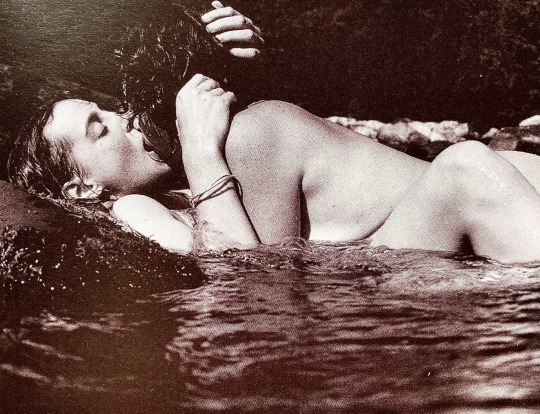
Photograph by Vita C. Shapiro
source: The Wild Good: Lesbian Photographs & Writings on Love, edited by Beatrix Gates
7K notes
·
View notes
Text
What are you looking.
This is a piece of the bark off a White Birch Tree that crushed to the ground on impact. The white is new tree bark which is less than paper thin building up after years of growth. The brown at the Base is the bark accumulation after 500 years of growth or more that was compressed by the tree. We have all heard of the indigenous people of North America canoeing on water ways in “Birch Bark…

View On WordPress
0 notes